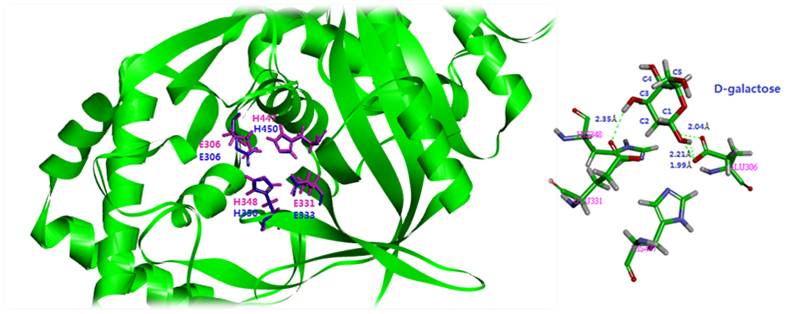Researchers found a novel L-arabinose isomerase from a food-grade microorganism
D-Tagatose, which has achieved GRAS (Generally Recognized as Safe) status under U.S. food and Drug Administration (FDA) regulations, is a rare natural ketohexose, an isomer of D-galactose that is considered as a potential sucrose replacement. It has almost equal sweetening power as sucrose, higher than similar components such as mannitol and sorbitol, but much lower caloric value of 1.5 kcal/g (only 30% of the energy content of sucrose). Requested in agro-food industry, D-tagatose has many healthy advantages, including enhancement of the flavor of food product, treatment of obesity, reduction in symptoms associated with type 2 diabetes, hyperglycemia, anemia, and hemophilia.
Prof. SUN Yuanxia’s group of Tianjin Institute of Industrial Biotechnology (TIB) found a novel L-arabinose isomerase from a food-grade microorganism, Pediococcus pentosaceus PC-5, to produce D-tagatose, a functional rare sugar. L-Arabinose isomerase (L-AI, EC 5.3.1.4) is the important biocatalyst which can be used in vitro for the production of D-tagatose using D-galactose as a substrate. However, the process of D-galactose isomerization usually occurs at an alkaline pH which introduces undesired side reactions such as browning and unwanted by-products formation that should be removed at the end of process. Furthermore, L-AIs were reported to be found from many thermophilic bacteria, but the food safety of these thermophilic bacteria and the derived gene has been questioned.
In this work, a novel L-AI from a food-grade bacterium Pediococcus pentosaceus PC-5 was cloned, expressed, purificated and characterized. Pediococcus pentosaceus PC-5, a kind of Lactic acid bacteria (LAB), is food-grade microorganism of commercial importance. The research showed that its derived LAI worked at low pH, which was more suitable for bioconversion and industrial while lactose as raw material hydrolysis to D-galactose at the range of pH 5.0-6.0.
The result showed that the purified Pediococcus pentosaceus PC-5 L-AI converted D-galactose into D-tagatose with a high conversion rate of 52% with 0.6mM Mn2+ and 0.8mM Co2+ at pH 6.0 after 24h at 50°C, suggesting its excellent potential in D-tagatose production.
The study entitled “Enzymatic conversion of d-galactose to d-tagatose: Cloning, overexpression and characterization of l-arabinose isomerase fromPediococcus pentosaceusPC-5” has been published in Microbiological Research. This research was supported by theNational High Technology and Research Development Program.

D-tagatose production with cheap raw material using enzymatic conversion method (Image by Prof. SUN Yuanxia’s group)

The structure of L-arabinose isomerase from Pediococcus pentosaceus (Image by Prof. SUN Yuanxia’s group)
